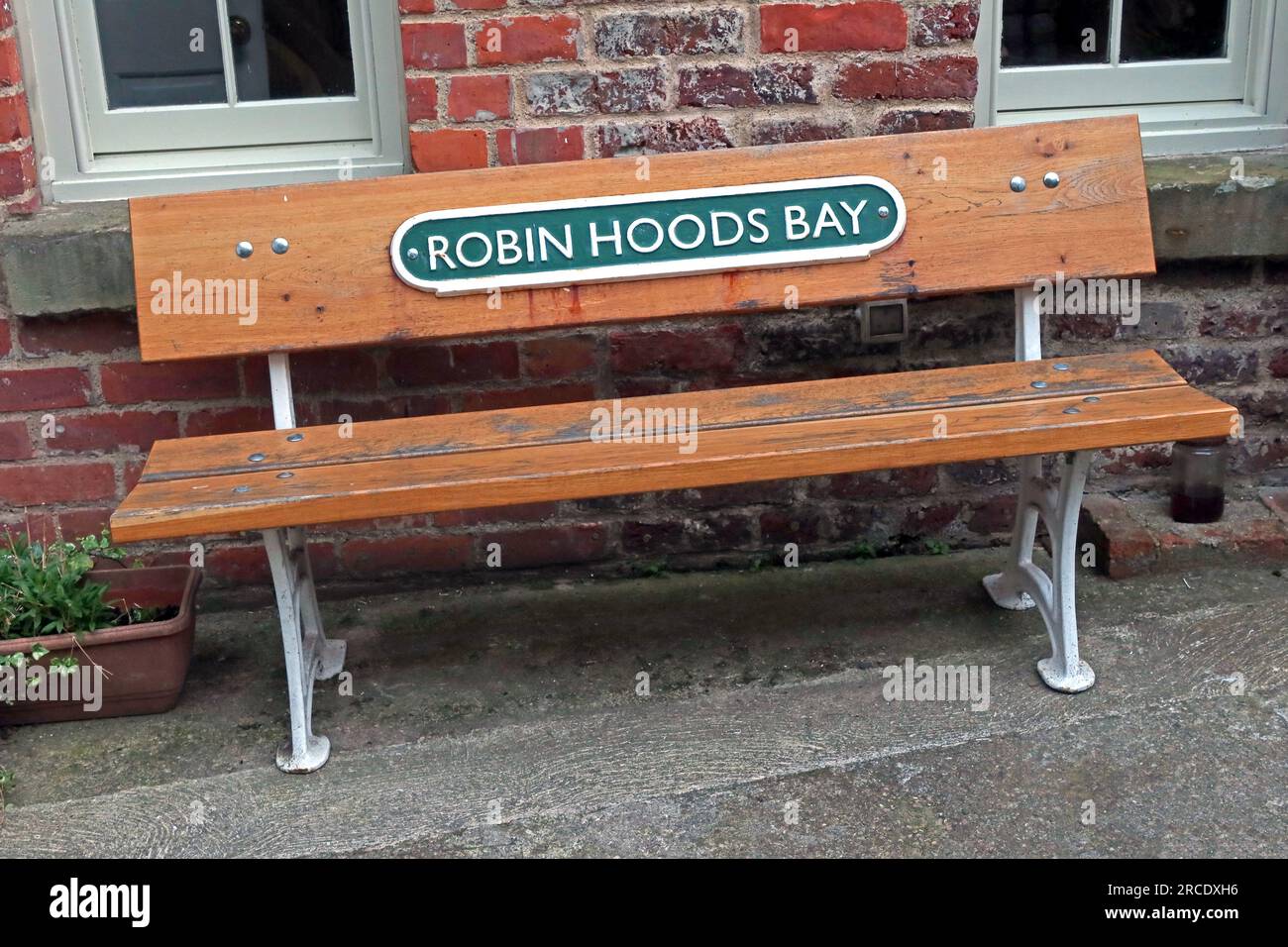Bench at Robin Hoods Bay, with old cast iron railway station sign, near Whitby, North Yorkshire, England, UK, YO22 4SE

Image details
Contributor:
Tony Smith / Alamy Stock PhotoImage ID:
2RCDXH6File size:
57.1 MB (2.7 MB Compressed download)Releases:
Model - no | Property - noDo I need a release?Dimensions:
5472 x 3648 px | 46.3 x 30.9 cm | 18.2 x 12.2 inches | 300dpiDate taken:
25 September 2022Location:
Robin Hood's Bay Rd, Robin Hood's Bay, Whitby, Yorkshire, England, UK, YO22 4SEMore information:
Robin Hood's Bay is a village in North Yorkshire, England. It is 6 miles (10 km) south of Whitby and 15 miles (24 km) north of Scarborough on the Yorkshire Coast. It is an ancient chapelry of Fylingdales in the wapentake of Whitby Strand. It is on the Cleveland Way national trail and also the end point of Wainwright's Coast to Coast route. The origin of the name is uncertain, and it is doubtful that Robin Hood was ever in the vicinity of the village. It is attested to in the early sixteenth century as "Robyn Hoodis Baye" in 1544. The English ballad The Noble Fisherman tells a story of Robin Hood visiting Scarborough, taking a job as a fisherman, defeating French pirates with his archery skills, and using half the looted treasure to build a home for the poor. However, the ballad is only attested to in the 17th century at the earliest. It is considered more likely to be a work original to the 17th century rather than an older medieval popular legend passed down, and very unlikely to be based on any historical incident. However, it is possible the author knew of Robin Hood's Bay, and sought to tie the story they wrote to the Scarborough area to explain and justify the name The village, which consists of a maze of tiny streets, has a tradition of smuggling, and there is reputed to be a network of subterranean passageways linking the houses. During the late 18th century smuggling was rife on the Yorkshire coast. Vessels from the continent brought contraband which was distributed by contacts on land and the operations were financed by syndicates who made profits without the risks taken by the seamen and the villagers. Tea, gin, rum, brandy and tobacco were among the contraband smuggled into Yorkshire from the Netherlands and France to avoid the duty. In 1773 two excise cutters, the Mermaid and the Eagle, were outgunned and chased out of the bay by three smuggling vessels, a schooner and two shallops.